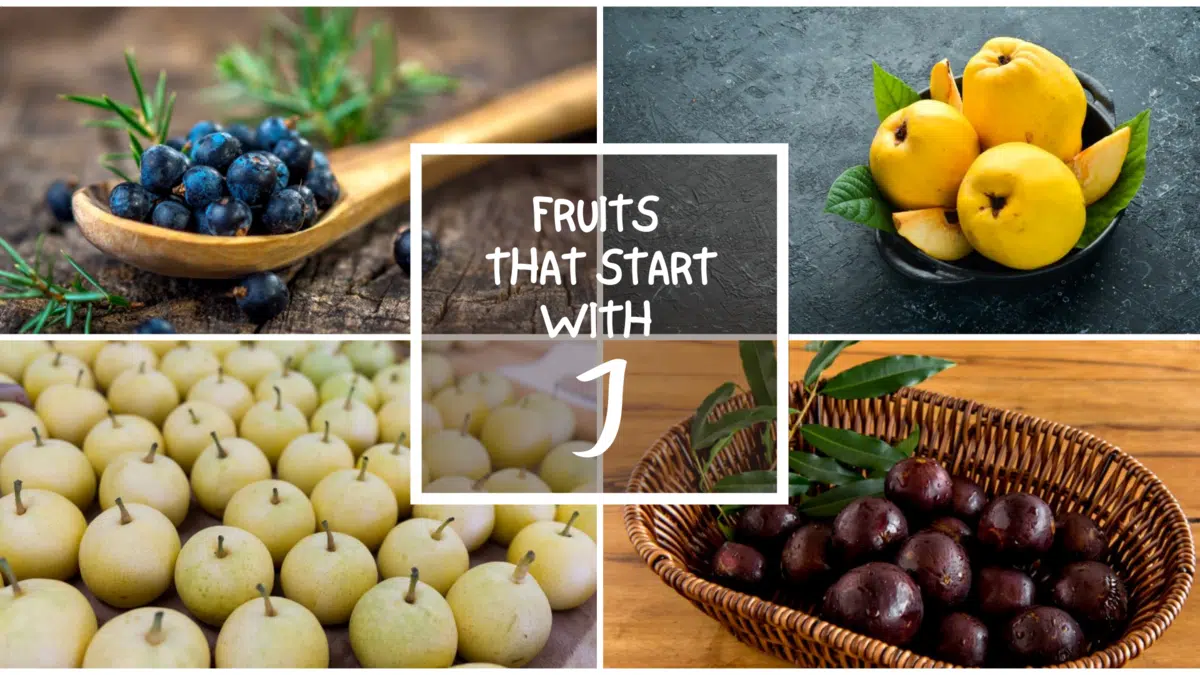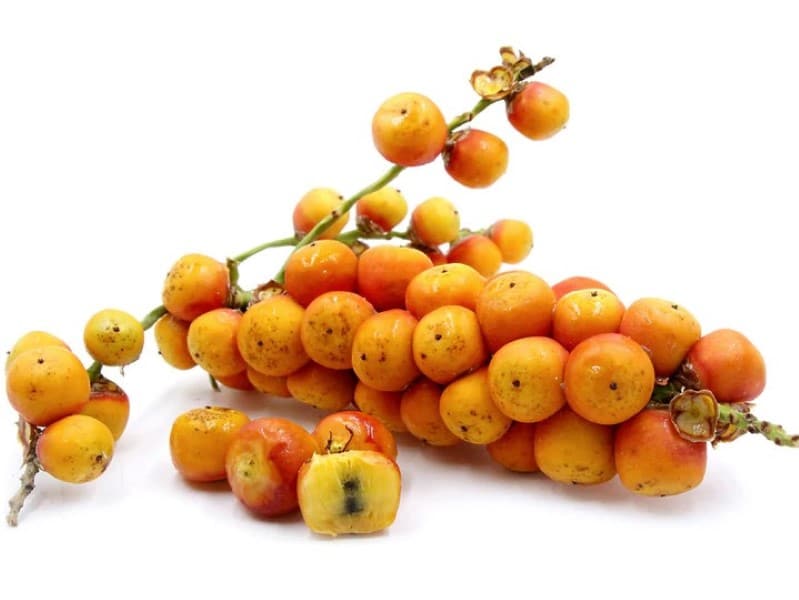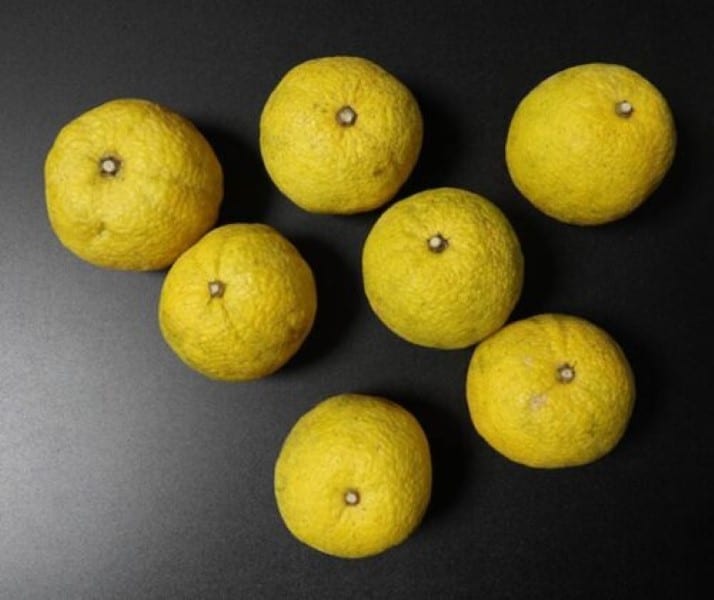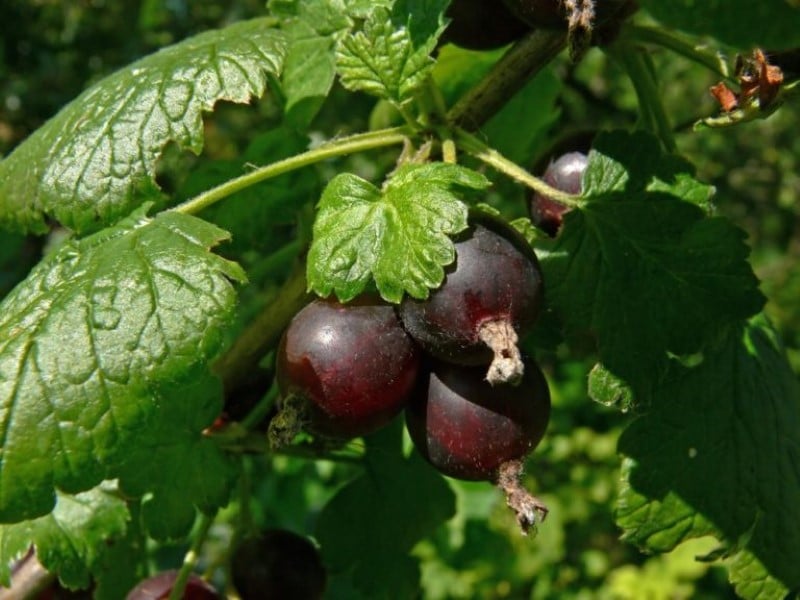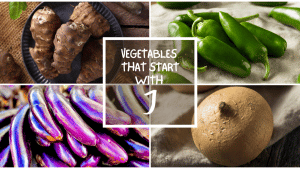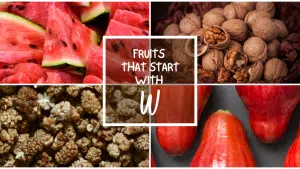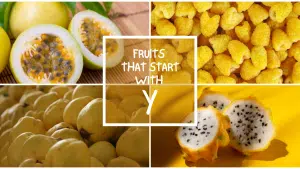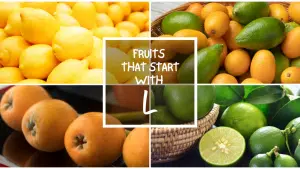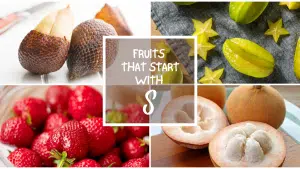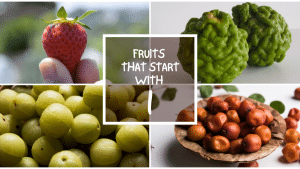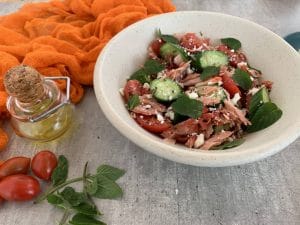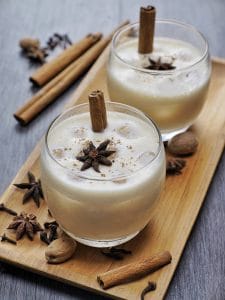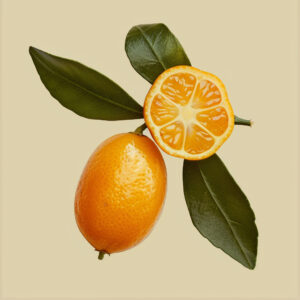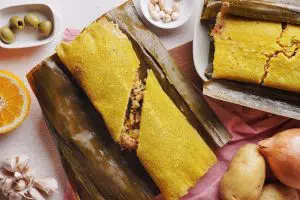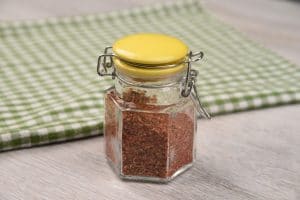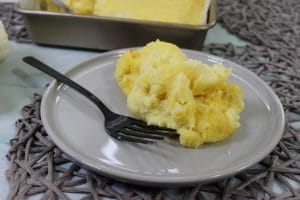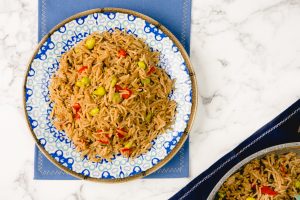All The Fruits That Start With J
Important Note: When you buy through our links, we may earn a commission. As an Amazon Associate we earn from qualifying purchases. Content, pricing, offers and availability are subject to change at any time - more info.
Learning about fruits that begin with the letter J will boost your fruit vocabulary and improve your fruit platter. Moreover, it increases your knowledge of the fruits that start with the letter J.
Fruits that start with the letter J, like jatoba, junglesop, Japanese persimmon fruit, java apple, Jamun, juniper berry, and jackfruit, each have unique nutrients, looks, origin, and flavors. Below are some of the fruits starting with the letter J.
- Jamun
- Jatoba Fruit
- Jaboticaba Fruit
- Juneberry
- June Plum
- Juniper Berry Fruit
- Junglesop Fruit
- Jujube Fruit
- Jocote Fruit
- Jelly Palm Fruit
- Japanese Persimmon Fruit
- Jack Fruit
- Java Apple
- Jamaican Tangelo
- Jabara
- Japanese Pear
- Japanese Quince
- Japanese Plum
- Jotsaberry Fruit
- Final Letter
Jamun
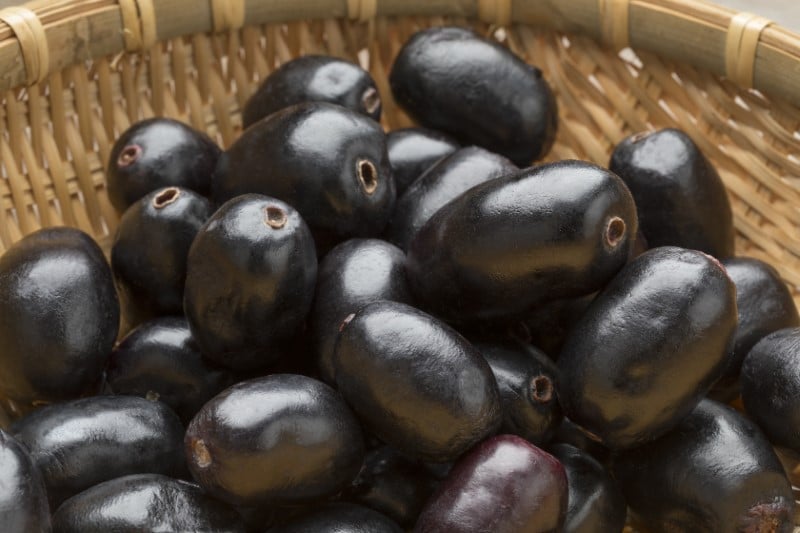
Jamun’s scientific name is Syzygium cumini. It is also called jambul or java plum. Jamun is originally from India. Later on, southeast Asian nations started importing it. The fruit has a purple color that will leave traces on your tongue. Its flavor is a combination of sweet and acidic that many people enjoy as a summer fruit. Many people season it with salt before they consume it. Jamun contains various nutrients such as magnesium, potassium, protein, fat, and vitamin B. The significant component of Jamun is water which takes 80%.
Jatoba Fruit

The scientific name of the jatoba fruit is Hymenaea Courbaril. Jatoba fruit is an edible palm fruit covered with a hard-shelled skin but has a dry pulp on the inside. You can easily find this fruit in the south and central America in the Caribbean. The fruit offers a source of protein and starch.
It is commonly referred to as Brazilian cherries because of its long brown pods. Jatoba fruit has an excellent tasty flavor. However, in Jamaica, it is given the nickname the stinking toe because of the unpleasant odor. Another reason for calling the fruit stinking toe is since it has a long oblong shape that resembles a human toe with a dark brown color. The tasty flavor of jatoba fruit has made many people ignore its foul smell. It tastes like a mixture of herbs, parmesan cheese, and dried milk.
Jatoba can be enjoyed fresh or dried to form a powder. The powder of jatoba can be mixed into water and consumed or added to cookies and soup. The big jatoba trees growing in the amazon are usually used for timber.
Despite the fruit having an ugly look, it impacts the health industry. Jatoba has health benefits, helping in cytotoxicity and antibacterial activities.
Jaboticaba Fruit
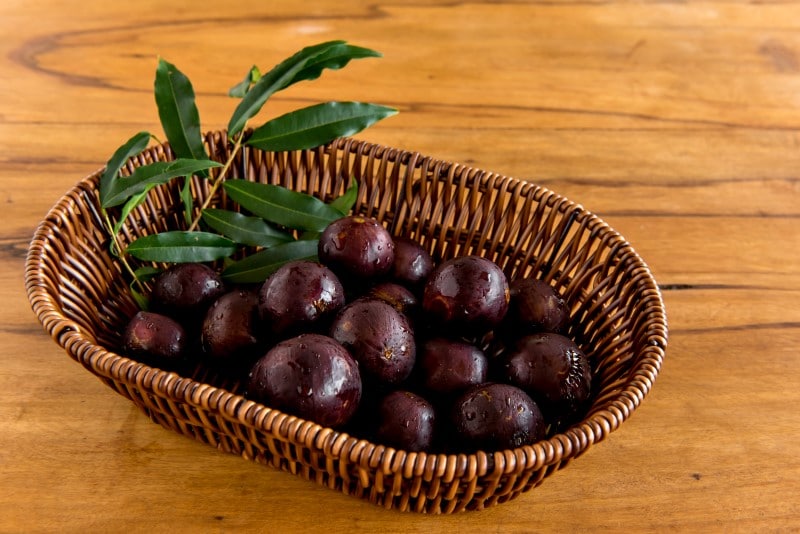
The scientific name of jaboticaba fruit is Myrciaria cauliflora. It is a grape-sized fruit covered with black skin, and its inside resembles lychee. Its other name is tree grape. The shape and size of a jaboticaba fruit are similar to that of a grape. It has purple skin with juicy white flesh. It has a deliciously sweet taste, almost the same as lychee.
The fruit is commonly found in South America and brazil. A jaboticaba fruit is unique as it does not grow on branches. Instead, they thrive on a tree’s trunk. Jaboticaba fruit has the taste of a combination of lychee and sour grape. Fermented jaboticaba fruit can be used in making syrups and wine. The fruit has a slight touch of floral and acidic sweet flavor. It is a rich source of potassium, iron, and calcium. It is safe to consume jaboticaba fruit, either raw or cooked.
Juneberry
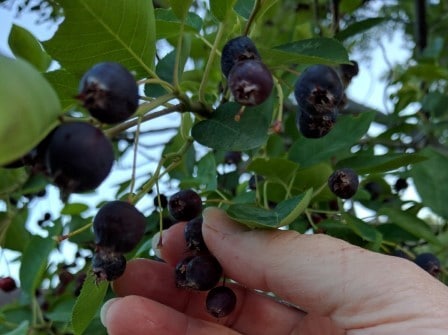
The scientific name of juneberry is Amelanchier. It is commonly confused for a berry fruit. The other name for juneberry is Amelanchier, and it belongs to rosaceae’s family. You can use this juicy fruit to prepare wine, muffins, and pies. Juneberry contains high vitamin C levels that are believed by native users to assist in anti-aging, antidiabetes, and anti-inflammatory benefits.
June Plum
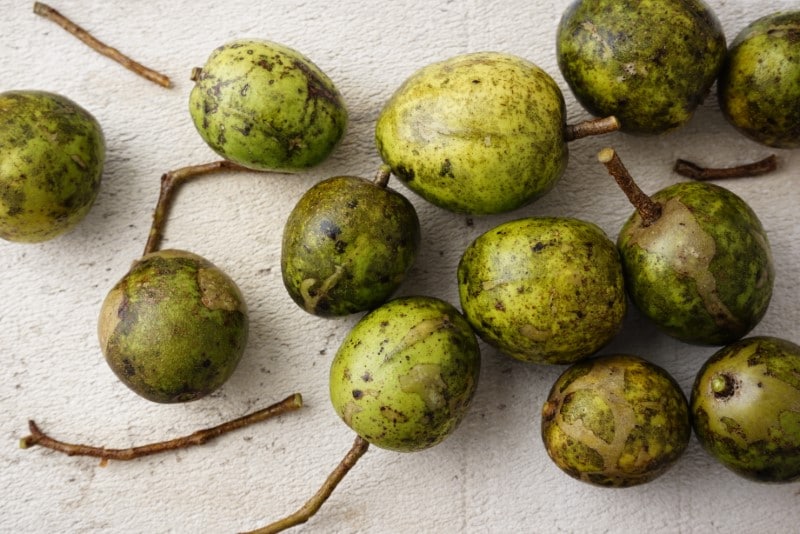
The scientific name of the June plum is Spondias Dulcis. The fruit is also called ambarella. It has an oval shape and green skin. The flavor of June plum is close to a mixture of the taste of a mango and a pineapple. It has a sweet and sour taste. The fruit has a crunchy texture similar to that of an unripe apple. You can enjoy your June plum plainly or mix it with lime juice.
Juniper Berry Fruit
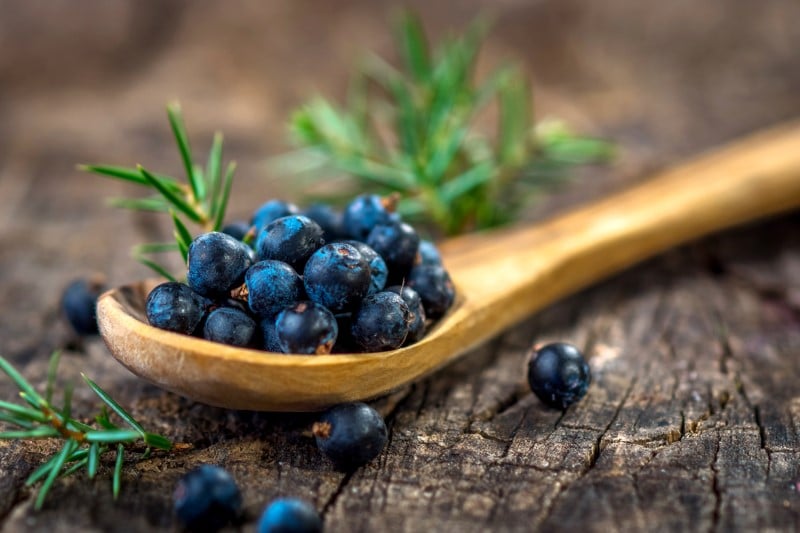
The scientific name of juniper berry fruit is Juniperus communis. Juniper berry fruit is usually grown in North America, Asia, and Europe. Despite its name, juniper berry fruit is not a berry. Although, the outer skin and cover of its skin make it resemble the berry family. The fruit is an aromatic and robust herb. It is commonly used to add flavor to refreshment drinks and also to preserve food naturally. The berries have been used in creating gin to produce its classic peppery taste. Juniper berry is rarely eaten fresh. Instead, it is commonly used as a food flavor. It is seldom eaten raw because of its strong and bitter taste. It can preserve food naturally because it has antifungal and antibacterial properties. The fruit is claimed to have multiple health benefits, such as inhibiting urinary tract infections, assisting in treating gastrointestinal disorders, and reducing autoimmune diseases.
Junglesop Fruit
The scientific name of junglesop fruit is anonidium manni. It is originally from Africa. Its common name in Africa is bobo to symbolize their fondness for this fruit. Junglesop is large and weighs between five and fifteen kilograms. The fruit is among the enormous fruits in the world, just after a jackfruit. On the outside, it resembles its sibling soursop. It is covered with a rind that is leathery brown, and its inside is a soft pulp that is orange or sometimes yellow. It has a delicious taste close to that of a peach. The taste is sometimes sour or sweet, varying with the time it was harvested. You can use junglesop fruit as an ingredient in making jelly, jam, and wine. The fruit is an excellent source of vitamins such as vitamin A.
Jujube Fruit

Jujube’s scientific name is ziziphus jujuba. It is also referred to as the Chinese date. It is originally from South Asia. The fruit has wrinkled skin with a purple or dark red color. They resemble other kinds of berries, including their small size. Jujube fruit has a chewy and sweet taste.
An unripe has a smooth rind and is green, with its taste being similar to that of a regular apple. When jujube gets older and ripens, it forms wrinkles and has a dark color of black or purplish-red. When you dry the jujube fruit, it has a texture like that of cherry and tastes like dates. It is commonly used in Asian cuisines in food items such as desserts and sweets. It is believed to have the health benefit of promoting learning and memory in an individual, stimulating neuronal differentiation, and keeping away neurotoxin stress from neuronal cells. The tiny fruit has soothing qualities that make you feel instantly relaxed after eating it.
You can use jujube fruit to make tea, wine, and jam.
Jocote Fruit
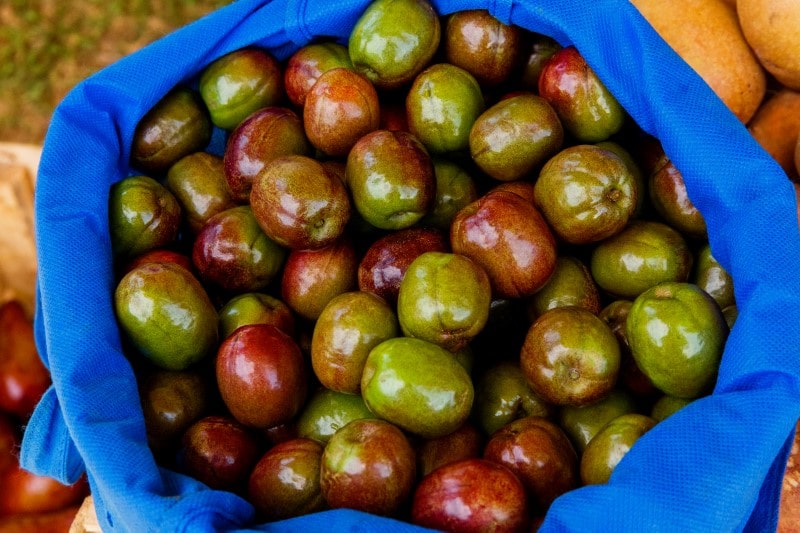
The fruit’s scientific name is spondias purpurea. Other names for jocote fruit are hog plum and red mombin. It is common in the Caribbean and Central America. Jocote fruit has a purple-red skin color, but sometimes it is yellow-red. The flavor of jocote is juicy with a combination of an acidic and sweet taste. You can enjoy the fruit raw or use it as an ingredient in making yourself a tasty drink. It is rich in fiber, protein, carotene, vitamin C, and fat. The fruit has the medicinal benefit of controlling weight loss, antiulcer, and antioxidant activities.
Jelly Palm Fruit
The scientific name of jelly palm fruit is Butia capitata. It is native to Brazil and Uruguay. It has grown to be popular in the continent of South America. Another name for jelly palm fruit is pindo palm. Jelly palm fruit has a shape that resembles that of a cherry.
The fruit commonly grows on the pindo palm tree and is usually in clusters. Its skin has a bold yellow color with a touch of red. The small oval fruit commonly grows on the palm tree of pindo. Jelly palm fruit has a mixture of a sweet flavor with a touch of tart. The taste is like a mix of apricot mix and pineapple. It gets the name jelly plum because it has many pectins. The fruit is a source of vitamin A and vitamin C, making it a vital anti-aging factor for a person’s skin.
Japanese Persimmon Fruit
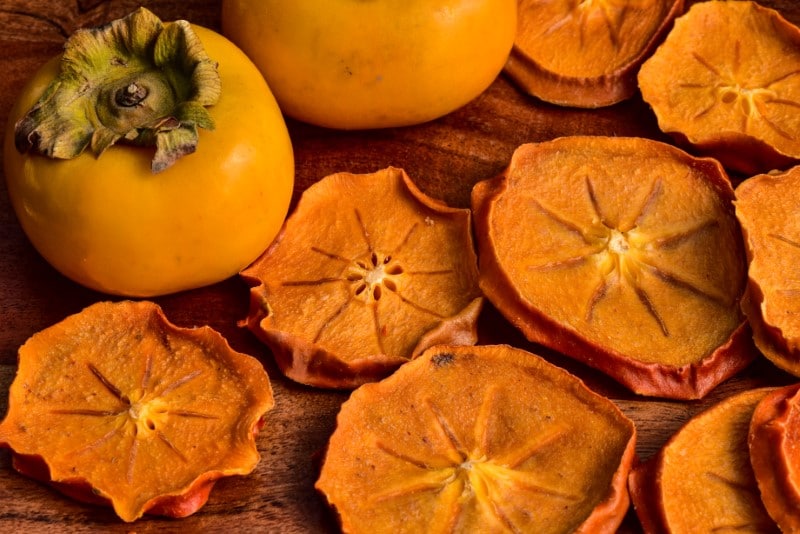
The scientific name of the Japanese persimmon fruit is Diospyros kaki. It is originally from china, japan, and the Himalayas. With the spread of the fruit, you can access them growing along the shores of California. The ripe fruit has a rich, creamy taste. It has a beautiful flavor like honey with a texture like a peach.
Jack Fruit
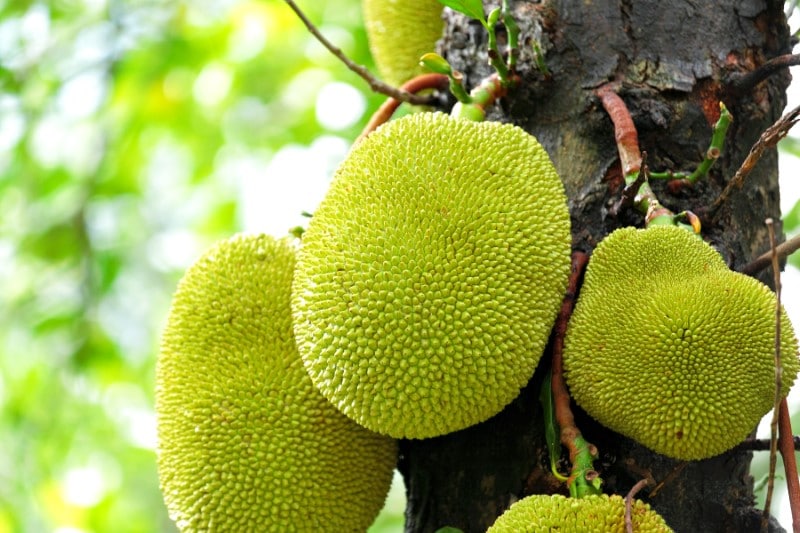
The scientific name of jackfruit is Artocarpus heterophyllus. Jackfruit is found in the family of Moraceae. It is native to sections of Malaysia, Sri lanka, Philipines, Indonesia, and India. It thrives in the tropical parts of the world. It is a substantial fruit and can be as heavy as 55 kilograms. It is close to the size of a melon, but instead, it has dry and rough skin.
The fruit has a delicious flavor. However, its smell is powerful, and the majority of the people cannot stand it. The raw fruit, as well as its seeds, can be prepared as curry. You can use a ripe jackfruit as an ingredient to make jams and desserts. The jackfruit has green skin with small pines. On the inside, it has many yellow pulps. The pulps have a musky smell.
You can enjoy a jackfruit raw, both ripe and unripe. It is an excellent fruit for hydration because its content comprises water taking 74% of the fruit.
Jackfruit can be used for several purposes, such as making jam and smoothies. The seeds of jackfruit can be enjoyed as a snack after cooking them. You can quickly get jackfruits in the united states in most stores in either frozen form or canned. Jackfruit is commonly used in modern diets as an alternative to meat. It has a meaty flesh texture almost the same as that of a chicken.
Java Apple
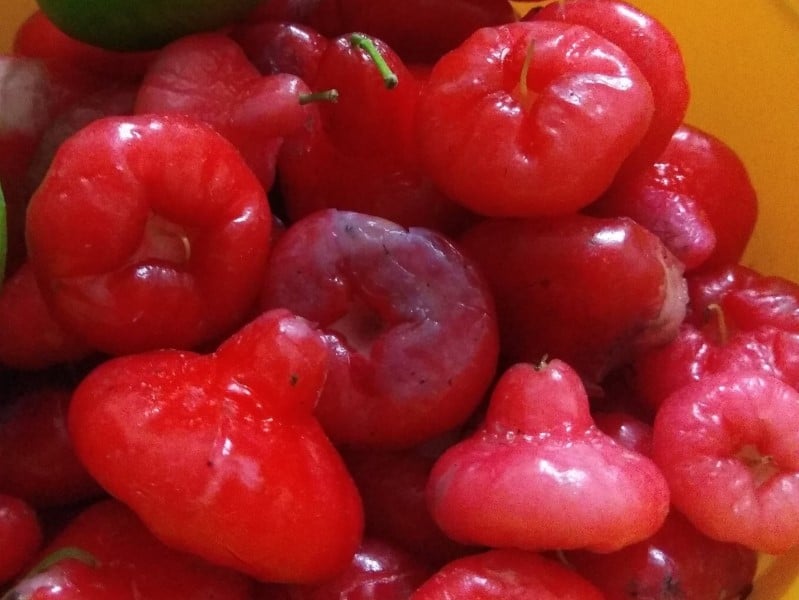
The scientific name of java apple is Syzygium samarangense. The tropical fruits are rose apple and wax jambu. It is widely grown in a lot of Southeast Asian countries. The fruit has the shape of a bell and is succulent. It has many color tones, such as white, purple, deep red, and sometimes even pink. When you eat it raw, you can enjoy the sweet taste. You can easily access the fruit at food mobile counters. Java apple has many health benefits such as strengthening the immune system, reducing risks of cancer such as lung cancer, and reducing toxicity inside your body, thereby reducing mortality.
Jamaican Tangelo
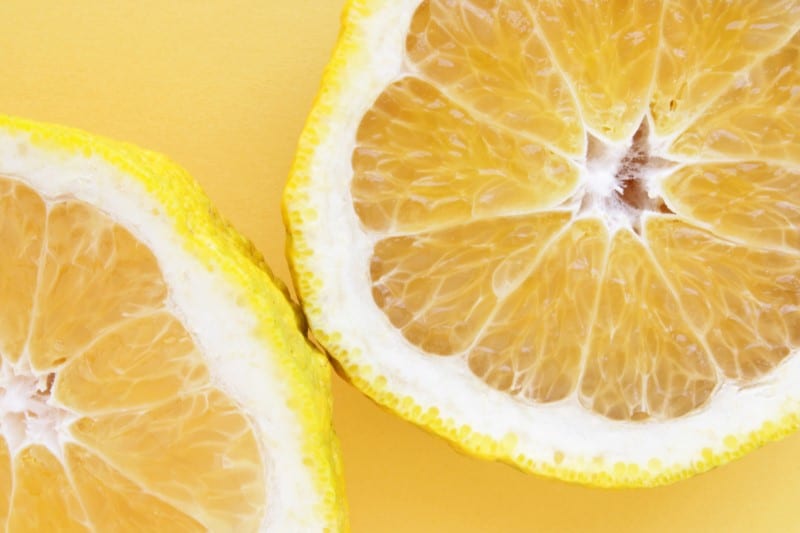
The scientific name of Jamaican tangelo is Citrus reticulata × paradisi. It is considered an offspring of the other citrus fruits.
It is also called Uniq fruit, paradise, ugli fruit, and reticulate. It is originally from Jamaica. Jamaican tangelo is a naturally occurring hybrid fruit of pomelo and tangerine. Its appearance looks like a lemon with the shape of a pear.
Jamaican tangelo, when unripe, has the same color as pomelo, slightly green. As it gets older while it ripens, it turns to the same yellow as ripe lemons. The succulent fruit has a sweet flavor similar to tangerine and is slightly less bitter than grapefruit. The fruit can be enjoyed fresh, just like oranges, or used to make juice. It has several nutrients, such as vitamin C and flavonoids. Flavonoids have high antioxidant, anticancer, and anti-inflammatory capabilities.
Jabara
The scientific name of jabara is Pontederia crassipes. It is a unique orange found in japan. It is also known as citrus Jabara; it is a scarce fruit that can only be found by people who wish to consume it in a village in japan known as Kitayama, which is found in Wakayama province. Its outward appearance is similar to that of standard oranges. As the fruit ripens, its peel turns its color to light yellow. The pulp of a Jabara fruit has a sour taste, just like a lemon’s. You can use Jabara to make your favorite juice or dessert. It has a high water content that gives a refreshing feeling when eaten on a hot day. Containing high levels of vitamin C helps in the health of your skin. Jabara has the health benefit to humans thanks to its anti-inflammatory, antioxidant, and antihypertensive effects.
Japanese Pear
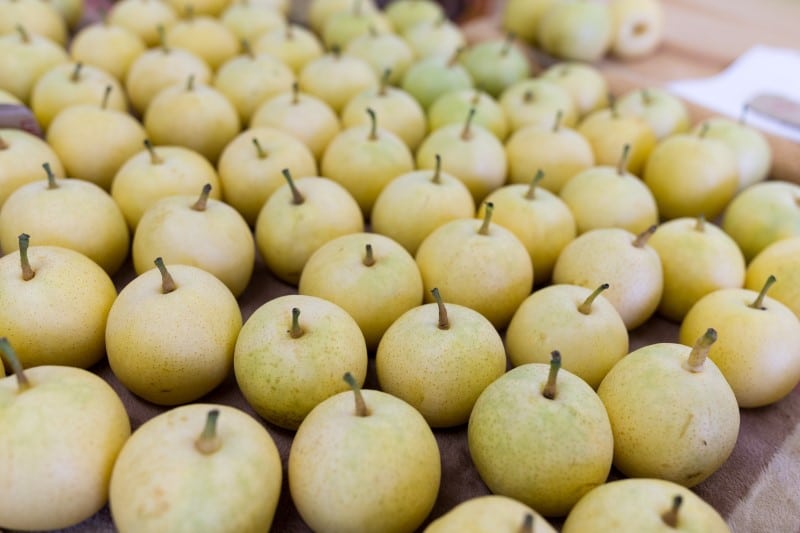
The scientific name of the Japanese pear is Pyrus pyrifolia. Other common names for Japanese pear are Korean pear, Chinese pear, and Taiwanese pear.
The common names explain the fruit having its origin in east Asia. Other nicknames for it are sand pear and apple pear.
It has a classy outer look. It is slightly bigger than regular apples with an oval shape. It has beige skin that is covered with tiny white spots. The high quality of Japanese pear makes it quite pricey. You can enjoy your Japanese pear raw and eat both the pulp and the skin. The fruit has a crisp and grainy texture. However, Japanese pear cannot be used in making jams or baking pies because of its high moisture content.
The fruit contains several nutrients like fiber, vitamin K, potassium, and vitamin C. It also has several health benefits, such as being a cure for cough, used for under-eye depigmentation, and in the Chinese health industry to boost the health of the skin.
Japanese Quince
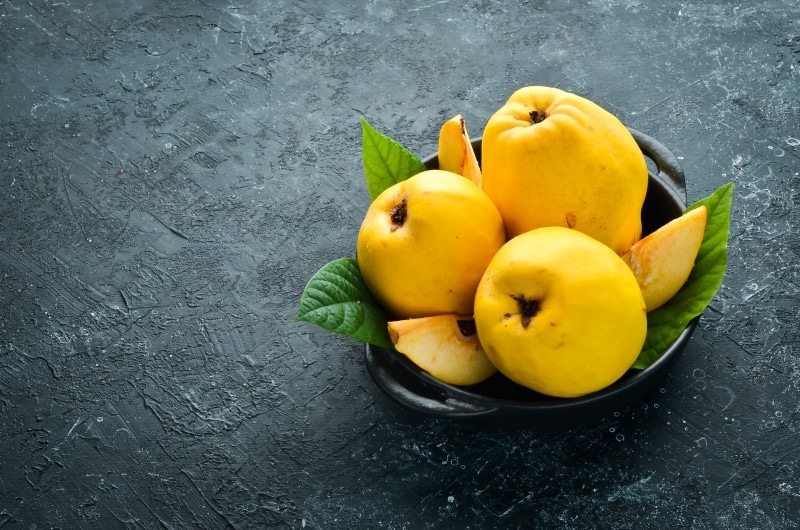
The scientific name of the Japanese quince is Chaenomeles japonica. Another common name for Japanese quince is maule’s quince. It is native to Japan. The fruit has a smooth skin with glossy yellow color. Even though it has no toxic effect, it is hard to consume it raw due to its astringent taste. You can use Japanese quince in the production of jam and wine. An advantage of Japanese quince is low sugar levels and fiber.
It is a rich source of minerals such as iron, zinc, phosphorus, copper, sodium, and magnesium.
Japanese Plum
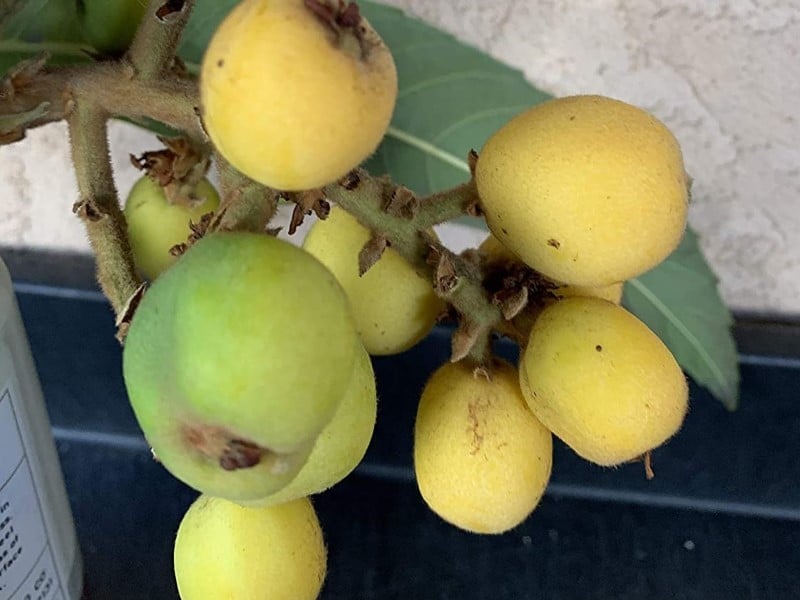
The scientific name of the Japanese plum is Prunus mume. It is from the Rosaceae family. It was native to china before it was finally imported to other countries like Korea, Taiwan, Japan, and Vietnam.
Japanese plum is similar to a peach, except it fuzzles. It is first green, then later on when it rises, it changes to half of it being pale green and the other half red. The pulp of this fruit is firm and has a sour and bitter taste.
You can use the ingredient of Japanese plums in the making of pickles, jams, and even liquor. Its flowers are used in making tea. The Japanese plum is believed to have medicinal benefits such as assisting in liver functionality and anti-inflammatory and antioxidant properties.
Jotsaberry Fruit
The scientific name of jotsaberry fruit is Ribes × nidigrolaria. This fruit is a cross between gooseberry, kiwi, and blackcurrant. It is originally from german. The fruit is commonly grown in cold climates. The taste of jotsaberry fruit contains a sweet and tangy flavor. You can enjoy your fruit fresh or use it in your favorite recipes. Jotsaberry fruit is an excellent choice for making jellies, pies, and jam.
Final Letter
There are so many fruits that begin with the letter j. Use the above list to enrich your fruit glossary and improve your diet. This list will surely help you enhance your knowledge of the fruit’s nutritional value, looks, taste, and origin. Enjoy the new recipes you can discover using these fruit ingredients.
